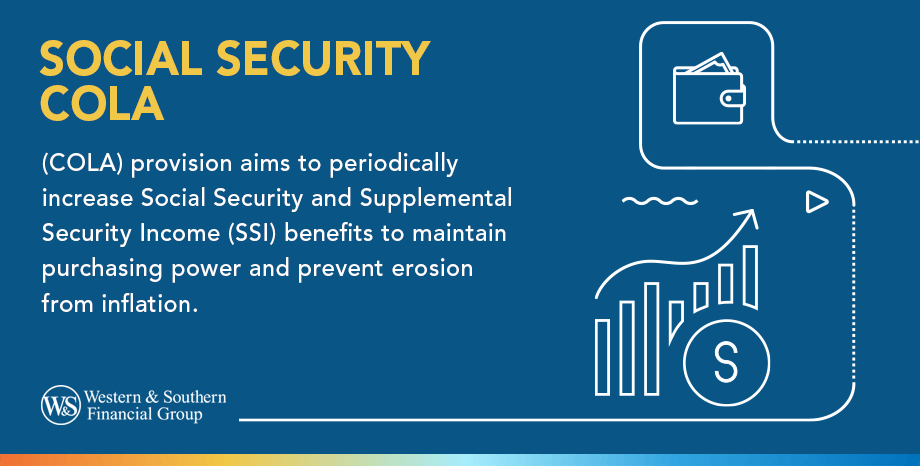

Table of Contents
Key Takeaways
- COLA stands for Cost of Living Adjustment, which increases Social Security benefits.
- The Social Security Administration calculates COLA annually using a formula based on inflation and aims to help benefits keep pace with rising prices.
- The COLA percentage and dollar increase are announced each October.
- The adjustment takes effect with December Social Security payments.
- Higher COLA percentages boost benefits more during times of high inflation.
If you receive a Social Security benefit, you may be aware that there may be a cost of living adjustment (COLA) each year, which increases recipients' benefit amounts. But the exact calculation for the COLA increase can seem confusing, and so can the fact that you're not guaranteed a COLA increase every year.
Here's some more information on how Social Security COLA is calculated and what it could mean for your Social Security retirement benefit.
Understanding Social Security COLA
The COLA was first introduced by the Social Security Administration (SSA) in 1975.1 This retirement benefit increase, which is typically announced yearly, helps Social Security retirement benefits keep pace with inflation.
The SSA uses the Consumer Price Index for Urban Wage Earners and Clerical Workers (CPI-W) to calculate an annual COLA increase.2 This index tracks the overall inflation of prices spent by urban wage earners on various goods and services.
The Bureau of Labor Statistics calculates the CPI-W each month. According to the SSA, a COLA that's effective for December of the current year is equal to the percentage increase (if any) in the average CPI-W for the third quarter of the current year over the average for the third quarter of the last year in which a COLA became effective.3 For instance, the 2023 COLA, which went into effect for 2022 retirement benefits, was 8.7%.
Years Without COLA
While COLA is the SSA's guarantee of your retirement benefit's buying power, it's important to remember that you can't necessarily count on it every year. In 2009, 2010 and again in 2015, there was no COLA increase. Since the COLA calculation is tied to inflation, there are sometimes years without a COLA or with very low COLA increases.
How the COLA Is Calculated
The COLA increase is applied to your primary insurance amount (PIA), which is the full amount of monthly benefit money to which you are entitled at your full retirement age. So if your PIA was $1,500 in 2022, and the COLA that year (8.7%) was applied, you would have received a monthly increase of $130.50 in 2023. The SSA uses your original PIA with the COLA increase as your new PIA. So if your PIA as of 2022 was $1,500, your PIA in 2023 becomes $1,630.50 after the COLA is applied.
Keeping Up With the Cost of Living
COLA increases can help offset the effects of inflation on fixed incomes. Knowing what COLA is and how it's calculated may help you better understand how and why your Social Security retirement benefit changes.
Sources
- Cost-Of-Living Adjustments. https://www.ssa.gov/oact/cola/colaseries.html.
- CPI-Urban Wage Earners and Clerical Workers (Current Series). https://www.bls.gov/help/one_screen/cw.htm.
- Latest Cost-Of-Living Adjustment. https://www.ssa.gov/oact/cola/latestCOLA.html.

















